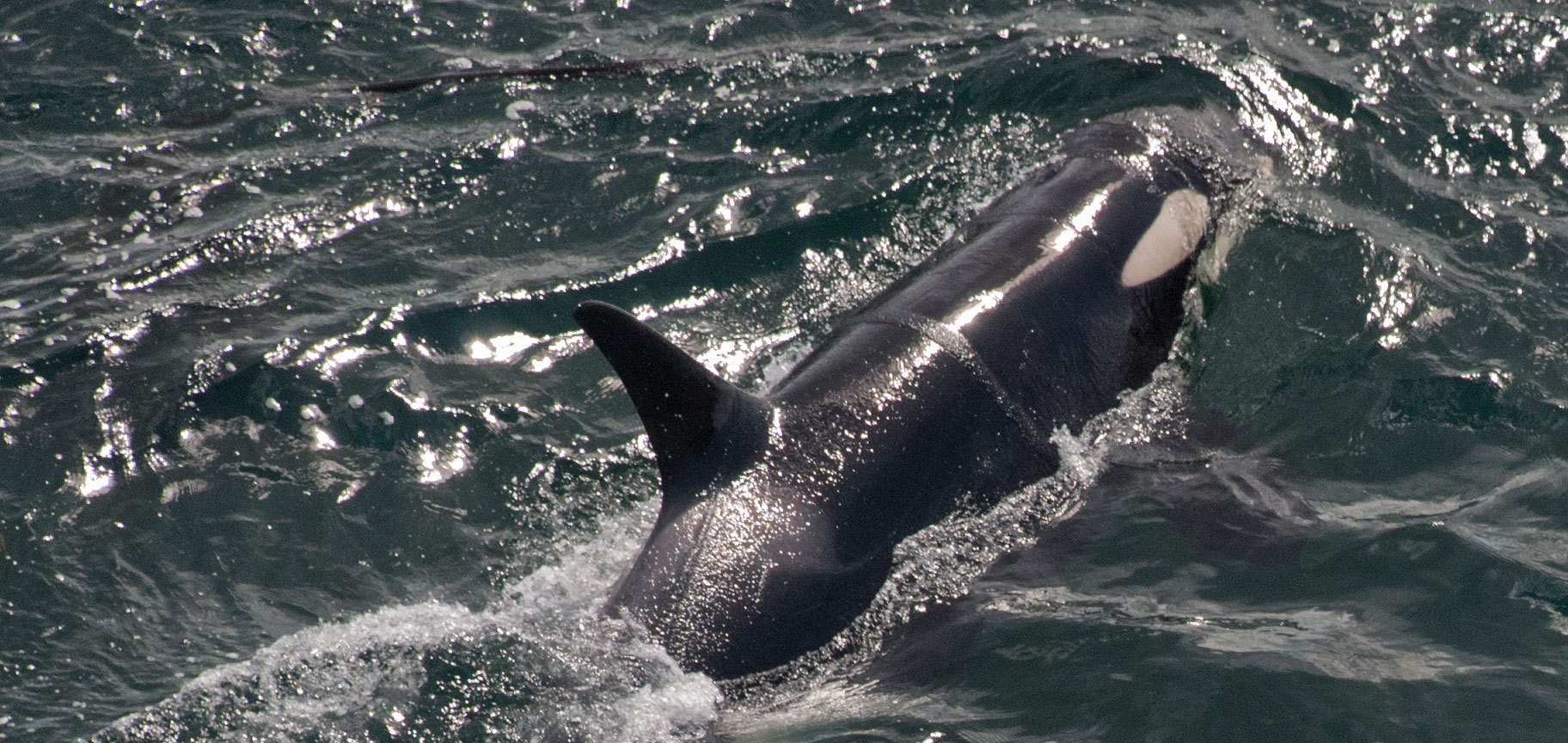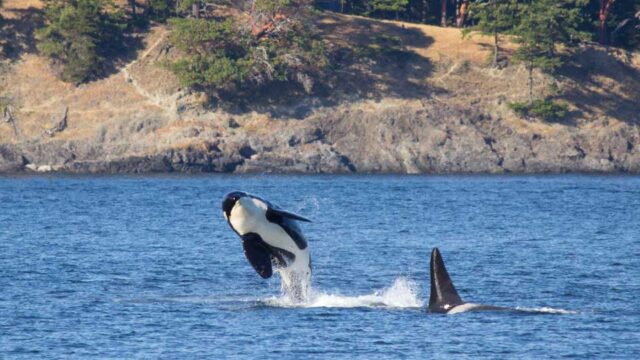For more than two weeks, the West Coast — and the world — has watched J35, a Southern Resident killer whale mother, carry her dead calf in what experts describe as a display of grief.
The calf was born on July 24 and lived for only half an hour — not long enough to be named under the system researchers use to identify each individual member of this endangered population.
Since then, J35 has carried it — usually on her head, sometimes carefully in her mouth and with a deep dive to recover it every time she takes a moment’s break. She has been doing this without interruption for so long that researchers are concerned about the consequences for her own health.
Scientists say orcas aren’t the only animals that mourn their dead. Other whales and dolphins have also been known to “keep vigils” for deceased podmates.
But the depth of J35’s display of grief has been particularly striking.
“What is beyond grief?” Deborah Giles, a research scientist for the University of Washington Center for Conservation Biologist is quoted as saying in the Seattle Times. “I don’t know what the word for that is, but that is where (the mother) is.”
The loss also highlights the critical circumstances the Southern Residents face.
As of today, the endangered Southern Resident killer whale population numbers only 75. In addition to watching J35, researchers are anxiously monitoring a four-year-old female, J50, who is dangerously emaciated and may not survive.
These salmon-eating resident killer whales, whose critical habitat is located in the transboundary waters of the Salish Sea off British Columbia and Washington State, have not produced a surviving calf since 2015. Recent research shows that 69 per cent of pregnancies are failing, likely due to poor nutrition.
The federal government acknowledged in May that this killer whale population faces “imminent threats to its survival.” The main threats are the lack of availability of Chinook salmon prey, underwater noise that interferes with basic life functions and communication, and environmental contamination.
Now that they’ve found that there are imminent threats to survival, the Ministers of Fisheries and Oceans and Environment and Climate Change are legally obligated to recommend that Cabinet issue an emergency order to protect the Southern Residents, unless there are already equivalent legal measures in place.
Ecojustice petitioned the ministers to do this in January, on behalf of the David Suzuki Foundation, Georgia Strait Alliance, Natural Resources Defense Council, Raincoast Conservation Foundation and World Wildlife Fund. The petition identified specific measures that an emergency order should include, including the creation of feeding refuges closed to fishing and whale-watching, and measures to address underwater noise from shipping.
Rather than recommend an emergency order to ensure urgent the suite of protections needed, the ministers have taken limited steps on some issues by implementing fishery closures in some of the whales’ foraging areas and by clarifying, in long-overdue amendments to federal regulations, that commercial and recreational whale watchers must stay 200 meters away from killer whales. The other actions announced are voluntary, research-oriented, yet to begin, and/or lacking timelines. More is needed, and urgently.
Meanwhile, the federal government is contradicting its partial measures to protect the whales by pushing forward with the Trans Mountain pipeline, which would add 816 oil tanker trips per year — a sevenfold increase — through the whales’ critical habitat.
The National Energy Board found that the marine shipping aspect of the project would have “significant adverse effects” on the species and that an oil spill would be “potentially catastrophic.” The lack of any measures to address those effects in the board’s report and in the government’s approval of the project is the subject of ongoing litigation by Ecojustice on behalf of Raincoast Conservation Foundation and Living Oceans Society.
J35 is unwittingly putting on a prolonged, public display of the devastating consequences of inaction on these issues. We will see this sad scene repeated again and again unless meaningful action is taken.
If this week’s heart-wrenching images don’t inspire action, what will?
This blog also appeared in The Narwhal. Photo of J35 kelping by Miles Ritter, via Flickr. Image obtained under Creative Commons.



